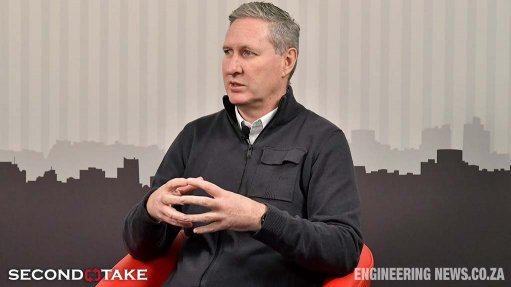Are partnerships the answer to South Africa’s ailing public hospitals?
South Africa currently has unequal healthcare provision between the private and public sectors, with per capita spending currently higher in the private sector than in the public sector, despite the latter covering a smaller percentage of the population.
The state of public healthcare infrastructure, along with other structural challenges, such as the difficulty in attracting and retaining skills, has also led to a decline in health services. For this reason, there is a growing discussion about a possible role for public–private partnerships (PPPs), which some believe could offer part of the answer to the challenges.
The National Treasury has set aside R105-billion this year for national and provincial health spending, but also plans to continue broadening the use of PPPs in the health sector, while engaging more with the public sector to improve the country’s hospital system.
But the National Treasury PPP Unit’s William Dachs also stresses that PPPs are not the solution for all the challenges confronting the South African healthcare system. Nevertheless, the instrument could offer two important advantages: a proven ability to deliver and maintain infrastructure on a large scale, and the leverage of private-sector skills and resources in delivering the necessary supporting services.
Minister of Finance Pravin Gordhan said in his 2009 Budget speech that the flagship PPP hospital project would be the Chris Hani Baragwanath hospital, for which a feasibility study had been completed. In addition, the new George Mkhari and Polokwane academic health complexes were being fast-tracked.
This appears to be recognition that it can no longer be business as usual at public hospital, where service levels are far from ideal and where management systems appear to fail with regularity, as has been highlighted recently with the spate of infant deaths at key institutions.
The head of General Electric Southern Africa, Thami Mbele, whose company offers healthcare solutions, points out that fewer than 10-million people are serviced by the private healthcare sector, while the disparities between the private and public sectors are becoming increasingly significant. “We need to make healthcare more accessible to more people and need to come together and figure out how to do it,” Mbele says.
WHAT ARE PPPs?
South African law defines a PPP as a contract between a public- sector institution or municipality and a private party. The private party assumes substantial financial, technical and operational risk in the design, financing, building and operation of the project.
There are two types of PPPs, namely where the private party performs an institutional or municipal function and where the private party acquires the use of State or municipal property for its own commercial purposes. A PPP may also be a hybrid of these two types.
Payment in any scenario involves one of three mechanisms: the institution or municipality paying the private party for the delivery of the service, the private party collecting fees or charges from users of the service, or a combination of these two.
Dachs explains that, in traditional procurement, infrastructure delivery is broken up into a multi- plicity of contracts, all of which are sourced from the private sector. The PPP model recognises that government is good at doing certain things and the private sector is good at others.
“The important thing is to harness the resources in both sectors while making sure that the risks associated with each party are identified, costed and assigned to the party best able to handle them,” he says.
Government will, in most cases, be responsible for all the clinical services, while the private sector will help with the design, cofinancing, construction and operation of the facilities themselves.
South African private hospital and healthcare group Netcare argues that PPPs have already proved themselves beneficial to both the private and public sector partners involved in such arrangements. Director of group stakeholder relations Dr Victor Litlhakanyane says that, besides the socioeconomic impact PPPs deliver, they have a consider-able, positive impact in terms of black economic empowerment (BEE).
Mbele argues that the key success factor lies in setting out the aims, including what is to be expected from government, such as the policy framework, and from the private sector. He adds that there needs to be a balance between economic benefits and infrastructure benefits, risks must be shared and the project cannot be too expensive.
“PPPs look at the capacity of services. Government has a number of priorities and a limited amount of money, which is where the private sector comes in,” he says.
Litlhakanyane says that hospital PPPs are being driven by the need to improve public-sector capacity and access to hospital care.
“Government is not coping with the increasing demand for healthcare and the private sector has the skills and resources to assist,” he says.
Financial services firm KPMG corporate finance associate director John Essey adds that PPPs are also being driven by a shortage of government funds. Budgets are being squeezed, but private-sector resources for infrastructure and management are available. Government can tap into these resources and has recognised this.
He says that there is a need for the private sector to provide a public service, as there is a shortage of capacity in the government space. Private entities can also potentially manage resources better, as well as assist in providing external service delivery. The health system has been skewed and private entities can provide better management and services.
POSSIBLE MODELS
The public and private healthcare sectors are two extremes, as the private sector is expensive and the public sector has many challenges in providing services and capacity, but Mbele says that using an intermediate model can work in different setups. PPP models can move from outsourcing management functions to complete concessions or joint ventures.
He says that different mecha-nisms can be considered in different situations to provide accessible, clean and affordable healthcare. The private sector can also provide capacity and gain funding easily. Delivery is the main focus and, if both sectors focus on this, healthcare in South Africa should be improved.
Dachs says that, at this stage, the revenue models have not been finalised, but these will be developed with improved quality services.
Essey speculates that the models that could be used could include greenfield projects, equipment supply, or colocation, or both, as well as refurbishment. The ongoing maintenance and operation of hospitals can be built into PPP unitary payments to ensure consistent standards, as risk is transferred to the private sector.
He says that the private sector can fund a PPP project through equity participation, using long-term senior debt, short-term mezzanine debt, perhaps some private equity and, possibly, balance sheet financing. Govern-ment would fund the project through conditional grants, possible capital injections into the project through its equitable shareholding and possibly, short-term bridging finance.
“In social-service-sector PPPs, revenue will not really be generated, but government would give the private entity unitary payments to run the hospital on its behalf,” says Essey.
Because PPPs are project- financed, a consortium of companies, which forms a special-purpose vehicle (SPV), would take an equity share and potentially put their own capital into a project. A bank or other financial institution would provide some finance in the form of debt and government may also provide some capital expenditure to build the hospital, and additional money for the SPV to operate and maintain the hospital and equipment.
Essey further explains that the SPV would bring in the building contractors, facilities management and other relevant entities, and payment would happen downstream. After services have been carried out, government would pay the SPV and the SPV would pay back debt and give financiers a return on their investment. This may take place over any suitable period, normally 15 to 25 years for projects of this nature and, after this period, the debt will be paid back, equity participants would have received return on their investment and the hospital will be handed back to government and become a government asset.
Nedbank Capital’s lead principal for infrastructure, Brett Botha, says that the National Treasury competitive process for bidding means that the price of a bid must be competitive. Further, the National Treasury will adjudi- cate the bids based not only on price, but also on risk transfer to ensure that value for money is achieved. Lenders are involved upfront to provide assurance that the bidder can raise the finance.
Botha says that the relevant government department or public-sector entity, with the assistance of the National Treasury, is required to establish the feasibility of projects to ensure that a PPP project is the best option. It has to ensure value for money and that sufficient money is available from government resources. If procurement through a PPP mechanism is proven to be affordable and to be the most cost-effective option, then private bids must be procured through a competitive bidding process to determine which bid can provide the most value.
POTENTIAL BENEFITS
The National Treasury believes that PPPs could offer a number of benefits to the South African healthcare system, including reduced financial, operational and technical risk exposure for govern- ment, fast and cost-effective execution of projects and the freeing up of scarce public funds for use on other social spending demands.
By sharing the cost and risk of projects with private companies, government can make its limited budget stretch further to tackle critical needs in sectors sooner.
PPPs also enrich the public service delivery process through the involvement of multiple contributors in public projects, encouraging innovation and diversity in the provision of public services, and can speed up and improve the quality of project and service delivery.
Synergies between public authorities and private-sector companies can result in significant value-add to projects, and PPPs facilitate the effective use of State assets to the benefit of all users of public services.
Dachs adds that PPPs will help to facilitate much-needed investment in the healthcare system. They will improve the health outcomes of public facilities and bring in modern, innovative hospital design and systems management.
“All of this will improve the healthcare experience, not only for patients, but also for people employed in the sector. Providing facilities that are of good quality alongside other human resource development measures will also contribute to the attraction and retention of skilled personnel in the key clinical sectors,” he says.
Litlhakanyane adds that PPPs benefit the health system through increasing capacity by building more hospitals, refurbishing existing hospitals, procuring and maintaining facilities, managing facilities and providing clinical services on behalf of government.
Essey explains that hospital PPPs can raise the standard of service provision, improve service delivery to communities, share knowledge and bring down the cost of efficient management, operation and running hospitals. They also provide private-sector access to the provision of public- sector services, a market they would not normally have had access to. Further, he says that the key outcome parameters of hospital PPP projects would be improved infrastructure, better management of costs and the extension of service provision to citizens, who would not have had access to these services in the past.
Another benefit is that innovation is brought into the market. Botha says that international participant can offer innovation and technological benefits which, ulti- nately, may lead to cost reduction or a better service or product. This, in turn, is a good mechanism for BEE transformation and small, medium-sized and microenterprise development requirements.
In addition, Essey points out that PPP projects can be cost- effective, as value for money is constantly monitored, substantial risk is shared with the private sector and affordability is ensured. The unitary payment back to the private entity is normally fixed; therefore, government knows what it is in for and any risks are passed on to the private sector. Cost- effectiveness is also secured in the unitary payments. Botha agrees, saying that, even though they may seem expensive, in the long run, PPPs protect the public sector from construction cost overruns and unexpected increases in operating, maintenance and/or rehabilitation costs.
Dachs says the National Treasury has studied local and global experiences and is convinced that PPPs can deliver good-quality services in a cost-effective manner if handled properly. Each project will be preceded by a feasibility study to determine specific healthcare and related needs in its catchments area; to estab- lish the appropriate service levels and the costs associated with the needs and anticipated services; and to identify the risks asso- ciated with the choices. The regulatory framework in South Africa ensures that all PPP projects are affordable, provide value for money and transfer appropriate risk before they are concluded.
Downside Risks?
Essey comments that a possible downside of PPPs is the project preparation time, which is longer owing to the National Treasury regulations, although these are completely necessary, as taxpayers’ money is being used and preparation must be thorough.
Mbele adds that there will always be a lag between policy, will and implementation in PPPs, owing to the processes in government, and Litlhakanyane also says that it takes time to get these projects to market and under- take negotiations with would-be partners.
Essey points out that another challenge is the coordination with the public sector, as it is a challenge for government departments to understand who is responsible for which function and why. Botha adds that a lot of education still needs to take place around PPPs in the public and private sectors. Once tried and tested, the partnership can deliver maximum benefit.
Dachs agrees that there are potential pitfalls in PPPs, owing to their long-term nature and the commitment of both public and private resources through a contractual arrangement. These, however, can be mitigated through proper planning, running a fair and competitive bidding process and by concluding solid contracts between the parties, which is the role of the Treasury.
Meanwhile, there is also some ideological resistance from unions and other organisations, as they see it as a form of privatisation. Mbele agrees with Essey that there still is debate on private involve- ment in the public sector, as people believe that it is government’s responsibility.
The National Education, Health and Allied Workers Union (Nehawu) said in March that it was opposed to PPPs in State hospitals, because they included outsourcing of staff and facilities. Its spokesperson, Sizwe Pamla, said that, although Nehawu supported the raising of funds from the private sector to build new hospitals, it was against the use of PPPs, as it believed that it was the State’s responsibility to deliver services to poor working class communities.
Botha points out that, although there is also a lot of criticism from the unions, PPPs tend to create jobs, while the money spent on such projects will generate growth, which would benefit the South African economy.
Project Pipeline
Current tertiary hospitals registered with the National Treasury as potential PPPs by the provincial departments of health are the Polokwane academic hospital, the Chris Hani Baragwanath hospital and the Tygerberg hospital complex. Dachs says that additional projects mooted are the Nelson Mandela hospital, in Mthatha, and the King Edward VIII hospital, in Durban.
Private hospital group Netcare continued to work closely and fostered strong relationships with government in the past six months through the building of two new hospitals in the Eastern Cape. These are the 91-bed Port Alfred hospital and the 249-bed Settlers hospital, in Grahamstown. Litlhakanyane says that the 214-bed Universitas/Pelonomi hospital, in the Free State, continues to show sound growth and improved operational performance.
He says that, in terms of South African PPPs, the contract usually entails elements of construction, as well as management services. Netcare’s involvement does not stop once the buildings have been erected or refurbished. Significant skills transfer also takes place during the construction process, as hospitals and clinics have very specific building requirements, as well as specialist services, such as laundry, cleaning and catering.
“Netcare is firmly committed to the objective of partnering government to provide increased access to quality healthcare throughout South Africa by way of PPPs,” says Litlhakanyane.
The healthcare group is also a leading part of the Tsepong PPP consortium, which is busy constructing, upgrading and will operate a new public hospital at Bots’abelo, in Maseru, Lesotho.
Essey notes that there are also projects that have been registered and are moving and operating, such as the Nkosi Alfred Luthuli hospital, in Durban; the Western Cape Rehabilitation clinic, the Polokwane hospital renal dialysis facility and the Port Alfred hospital. All have a 100% success rate, as all have moved forward. The private sector expects an uptake of more such projects in the market.
KPMG is an adviser to the Western Cape Rehabilitation clinic and is also carrying out a review of the Universitas/Pelonomi hospital. The company is also involved in the Nelson Mandela Children’s hos-pital, which is a hybrid PPP model, which, Essey explains, means that it has private-sector participation and uses PPP principles of good governance, but does not necessarily follow the traditional PPP-type model.
The firm is also tracking antici- pated future projects, such as extensions to the Chris Hani Baragwanath hospital and five other envisaged hospitals in the future. He says that KPMG advises on the public side and also participates in the private-sector consor-tiums as a financial adviser. KPMG has acted in different capacities on both sides in numerous deals.
In addition, a number of banks have created specialised finance teams focused on the infrastructure sector, which carry out a lot of work in PPPs. To date, there have been four or five PPP health projects in South Africa funded by straight services agreements or equity.
THE OUTLOOK
As Engineering News canvassed opinion on the outlook for PPP in the hospital sectors, it became increasingly apparent that both the public and private sectors are committed to the improvment of both healthcare and partnerships.
PPP projects offer an alter- native to traditional forms of procurement, which is challenged by service delivery and budget constraints. In addition, private-sector expertise and know-how could be important to arresting the decline at certain hospitals, as well as instilling a new discipline, financial and operational, at others.
But success will depend heavily on design, proper procurement processes, and full transparency, of both the project pipeline and the desired outcomes.
Dachs concludes that government’s long-term vision is for a healthcare system that is free of qualitative differences between the private and public sectors. Whether PPPs will become an important tool in bridging that divide remains to be seen.
Comments
Press Office
Announcements
What's On
Subscribe to improve your user experience...
Option 1 (equivalent of R125 a month):
Receive a weekly copy of Creamer Media's Engineering News & Mining Weekly magazine
(print copy for those in South Africa and e-magazine for those outside of South Africa)
Receive daily email newsletters
Access to full search results
Access archive of magazine back copies
Access to Projects in Progress
Access to ONE Research Report of your choice in PDF format
Option 2 (equivalent of R375 a month):
All benefits from Option 1
PLUS
Access to Creamer Media's Research Channel Africa for ALL Research Reports, in PDF format, on various industrial and mining sectors
including Electricity; Water; Energy Transition; Hydrogen; Roads, Rail and Ports; Coal; Gold; Platinum; Battery Metals; etc.
Already a subscriber?
Forgotten your password?
Receive weekly copy of Creamer Media's Engineering News & Mining Weekly magazine (print copy for those in South Africa and e-magazine for those outside of South Africa)
➕
Recieve daily email newsletters
➕
Access to full search results
➕
Access archive of magazine back copies
➕
Access to Projects in Progress
➕
Access to ONE Research Report of your choice in PDF format
RESEARCH CHANNEL AFRICA
R4500 (equivalent of R375 a month)
SUBSCRIBEAll benefits from Option 1
➕
Access to Creamer Media's Research Channel Africa for ALL Research Reports on various industrial and mining sectors, in PDF format, including on:
Electricity
➕
Water
➕
Energy Transition
➕
Hydrogen
➕
Roads, Rail and Ports
➕
Coal
➕
Gold
➕
Platinum
➕
Battery Metals
➕
etc.
Receive all benefits from Option 1 or Option 2 delivered to numerous people at your company
➕
Multiple User names and Passwords for simultaneous log-ins
➕
Intranet integration access to all in your organisation


















